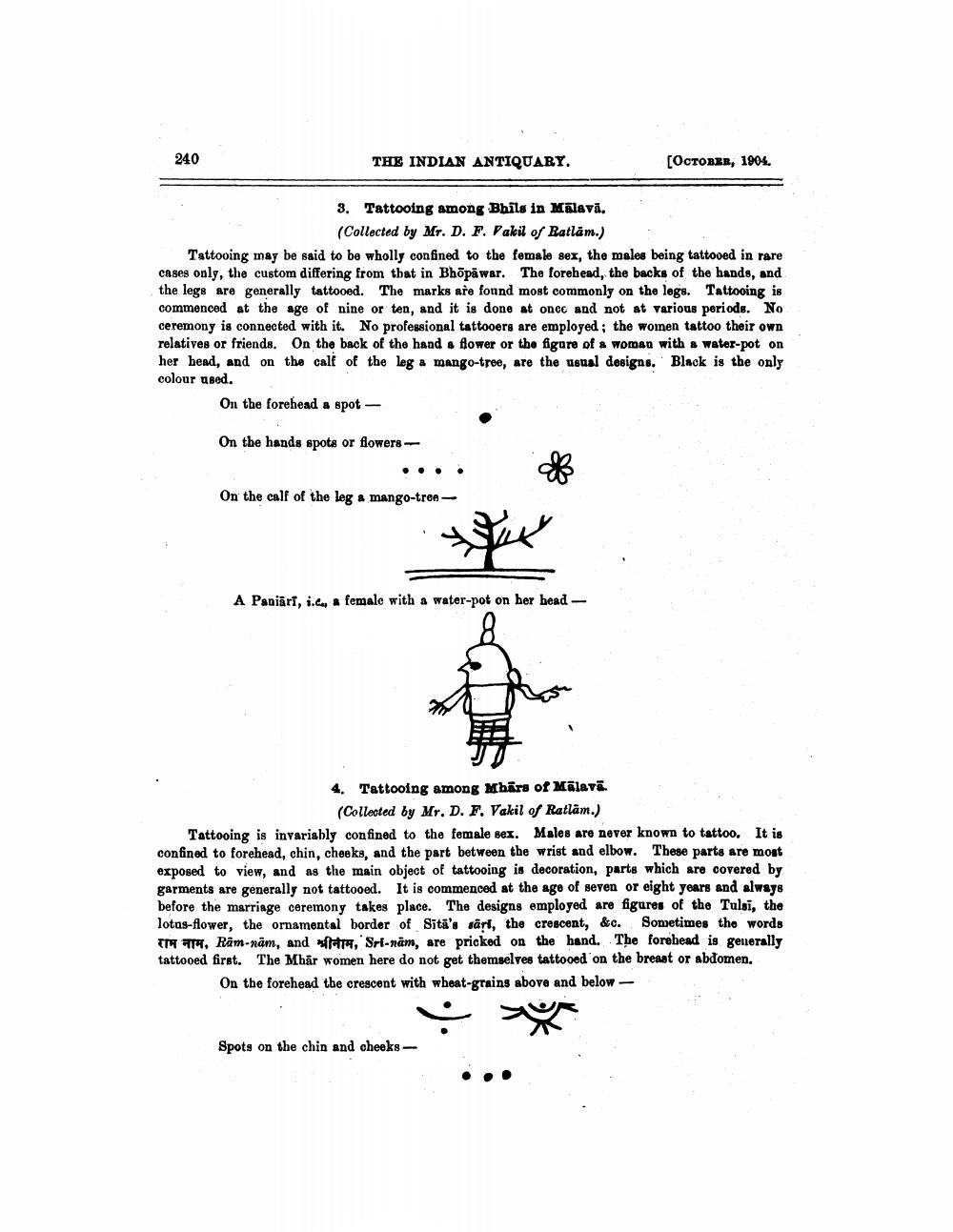________________
240
THE INDIAN ANTIQUARY.
3. Tattooing among Bhils in Mälava, (Collected by Mr. D. F. Vakil of Ratlām.)
Tattooing may be said to be wholly confined to the female sex, the males being tattooed in rare cases only, the custom differing from that in Bhōpawar. The forehead, the backs of the hands, and the legs are generally tattooed. The marks are found most commonly on the legs. Tattooing is commenced at the age of nine or ten, and it is done at once and not at various periods. No ceremony is connected with it. No professional tattooers are employed; the women tattoo their own relatives or friends. On the back of the hand a flower or the figure of a woman with a water-pot on her head, and on the calf of the leg a mango-tree, are the usual designs. Black is the only colour used.
On the forehead a spot -
On the hands spots or flowers-
On the calf of the leg a mango-tree
S
A Paniārī, i.c, a female with a water-pot on her head
[Остовкв, 1904.
4. Tattooing among Mhars of Mälava. (Collected by Mr. D. F. Vakil of Ratlam.)
Tattooing is invariably confined to the female sex. Males are never known to tattoo. It is confined to forehead, chin, cheeks, and the part between the wrist and elbow. These parts are most exposed to view, and as the main object of tattooing is decoration, parts which are covered by garments are generally not tattooed. It is commenced at the age of seven or eight years and always before the marriage ceremony takes place. The designs employed are figures of the Tulsi, the lotus-flower, the ornamental border of Sita's säri, the crescent, &c. Sometimes the words
, Ram-nam, and , Sri-nam, are pricked on the hand. The forehead is generally tattooed first. The Mhar women here do not get themselves tattooed on the breast or abdomen.
On the forehead the crescent with wheat-grains above and below -
Spots on the chin and cheeks




